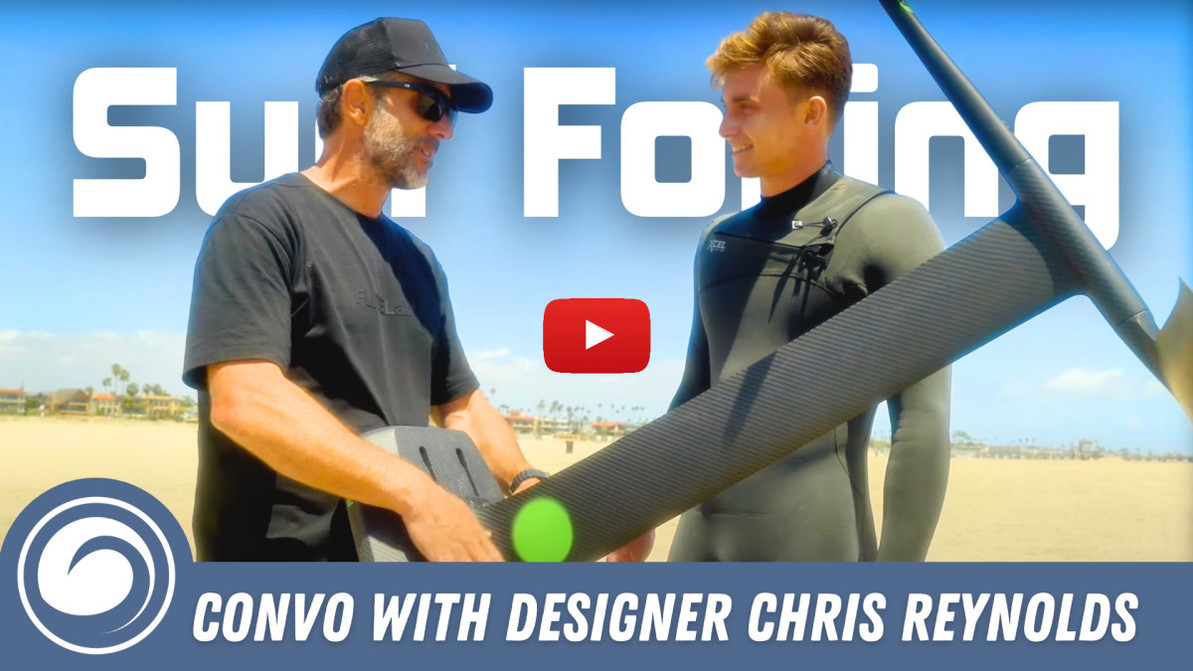Chris Reynolds Reveals the Details Behind FLITELab's AMPJet System
Cole had a chance to test the new FLITELab boards and meet up with designer Chris Reynolds. Chris was kind enough to take an hour out of his day to do an on-the-beach interview with Cole and provide some in-depth insights into his long-awaited board, jet, and foils. It was an interesting journey to get from concept to release, and we think it's well worth the watch or read. Many thanks to both for getting this info out there!
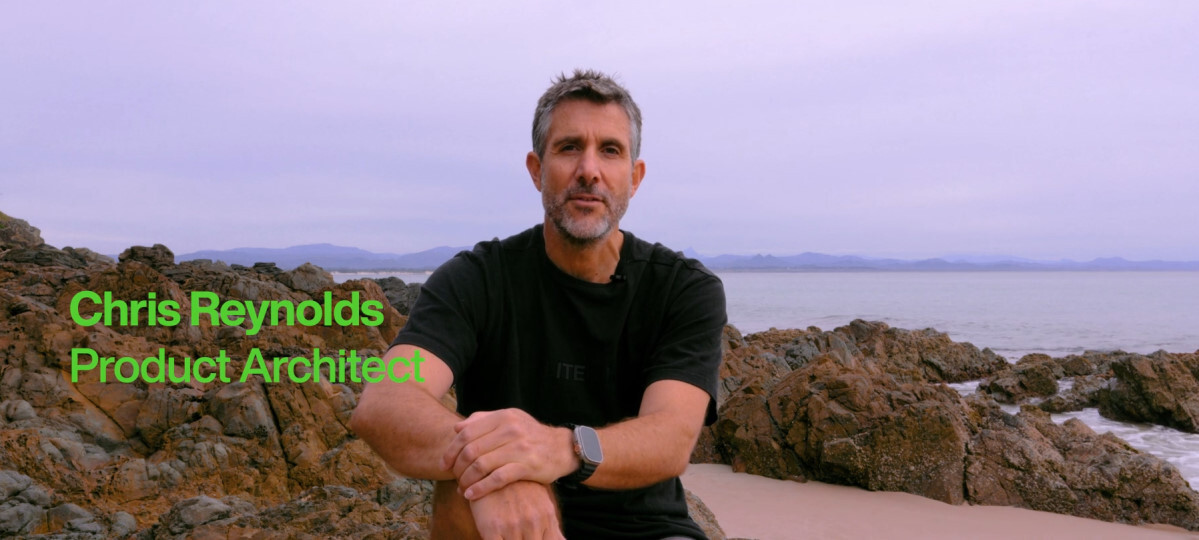
Jump to a Topic
The RAW Board
The AMP Board
The AMPJet
The FLUX Foil
Design Chat
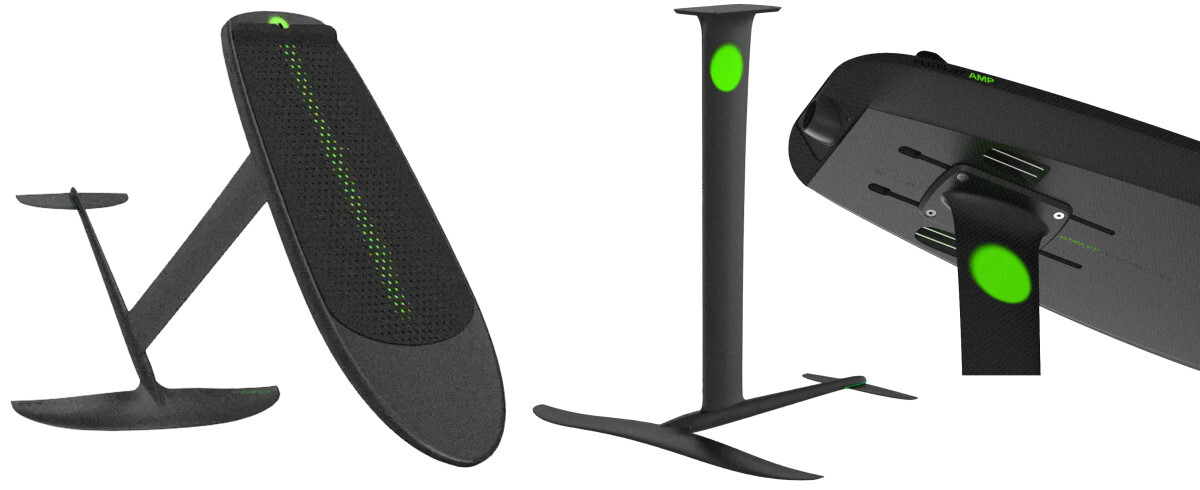
Cole: Today I'm here with Chris from FLITELab. He flew all the way from Australia to do a demo for us here. So, we're going to pick Chris's brain today about these products, and he's going to let us know how he came up with it, why he came up with it, and how it can help you with your riding. Thanks for coming down, by the way.
The RAW Board
Chris: It's awesome to meet you and be here in America. At launch we've got two ranges of boards. We've got a board called our RAW range. That's like your typical raw board, but a lot of tech's gone into it. It doesn't have a jet. It's super light, super stiff. We went through a crazy amount of layups. It paddles insane for its size. Every time I send someone out on it, I ask what board do you ride? If they say they ride a 4'6", I have them take the 4'2" out. They think it's going to be too small, but they go out and they're like, "I can't believe that paddles as well as it does for a 4'2"."
I spent a long time designing this board. It looks pretty straightforward, but even simple things like shaping in the concave the way we do had a lot of thought put in. It's quite flat through here, and we get quite a bit of a kick here just in the offset to push you off. We squared out the rails up here. This is an 18" wide board. It looks fatter than what it actually is. We stretched the deck out as much as we could for the people that ride with an offset.

Constructionwise, I won't go into too much detail because it's a bit of our secret sauce, but we went through 20 of these things just to get them as stiff and as light as possible. We've had them out the field for over 12 months now with all these guys where I've said, "Please do not look after this thing. Just go as hard as you can." And they're all holding up beautiful. It's good to be able to build a board this light. This board's a 4'0", and with deck grip you're looking at 4.4 lb. So, it is light, but it's also crazy stiff. The board lineup on the Raw is 4'0", 4'2", 4'0", and 4'6".
Cole: When you said they were tough boards, did you tell me yesterday you actually had to drive a car on it before it broke?
Chris: Yeah, we did. We had a board that we needed to write off. And me and a mate were like, "Let's do a video and see how strong this thing is." We stuck it between two bricks and I'm 180 lb, probably 190 lb nowadays. And I'm standing on the thing sort of jiggling going, "Look at this. This is great." He's like, "Jump on it." So I'm jumping up sort of softly, then as hard as I can. And we pick it up and there's a little scratch in the nose and the tail. So we end up driving a car over it. That broke it. So don't drive your car over it.
On the bottom you'll see the custom tracks. We've done a big opening here and a little ramp. So it's really easy to swap foils in and out or swap a foil from board to board. You just loosen these four things, pull it back, and it just slides out.
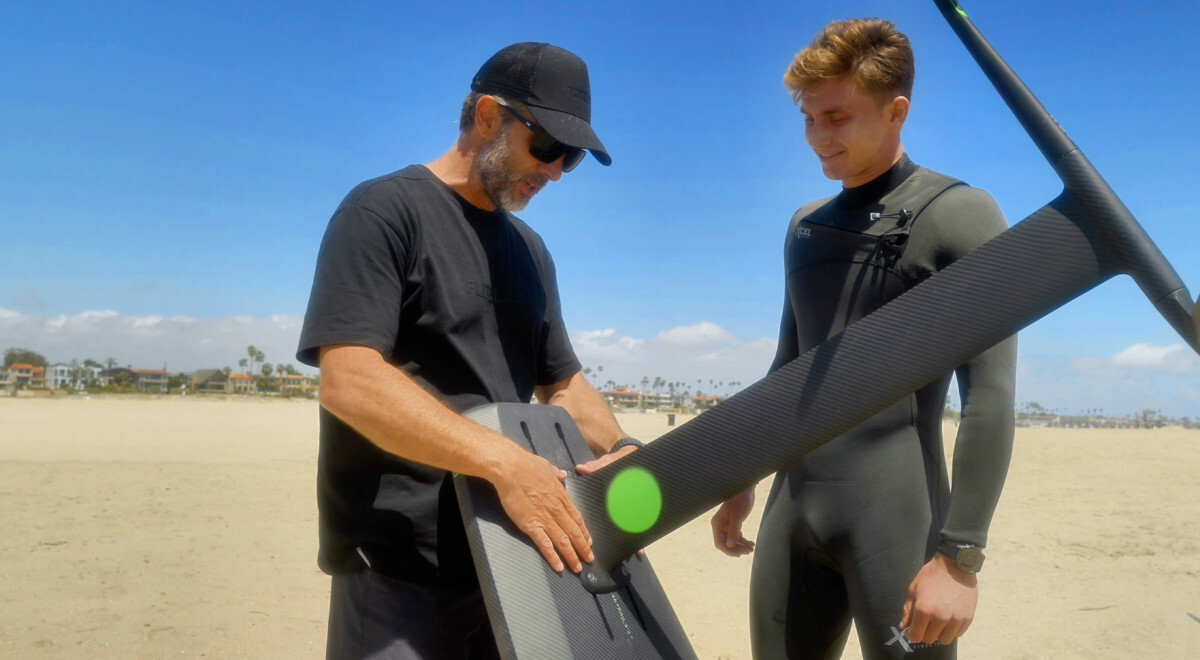
Cole: So, you can actually leave your track nuts on?
Chris: I never take them out. They just sit there. It's really nice from that point of view, especially when you're going from prone to winging and you want to swap out to a bigger board like a 5'0". You just slide it out, slide it into the next board, and do it up.
The AMP Board
Cole: You said this one's the RAW? So, no jet. And this is the AMP board? So, the main difference between these two is the AMP's got a jet. The RAW doesn't. What's the difference with the AMP board compared to the RAW?

Chris: The lineup has slightly different board sizes. We've got two board ranges in the AMP at the moment. We've got the AMP S-Range with a 4'8", 4'6" and a 4'2", which is one of my favorites. I ride the 4'2" all the time. We've also got a mid-length shape with a 5'0" and a 5'8" at launch. And then we'll fill the sizes in as we go along. Designwise, it's bit of a similar outline. We've certainly taken some DNA from the RAW boards, but with some tweaks. They're a slightly thicker board to fit the jet, but this is more in line with the industry. The RAW boards are actually quite thin for their size, especially in the 4'6" range.

Then there are a few little tweaks with the shape to make them great for what they actually are. I ride this board quite often, even without the jet. It's very easy to remove the jet, and the board comes with a foam blank that you can put in. I've left the foam blank at home and ridden it without, but it fills in that board and gives you an extra couple of liters of volume. It's an awesome board to ride as a prone, and I've given it to heaps of people who said it was one of the best prones they've ever ridden. Then I stuck the jet in to see how they liked it, and it was really great.
Cole: If there's someone that's new to prone foiling and looking to use the Jet to get into prone foiling, what size would you recommend for the AMP?
Chris: It's always a little bit condition dependent, but certainly the 4'8" is a great board.
Cole: So, not even the bigger sizes? You'd say to go 4'8".
Chris: The 4'8" is the S shape. We've widened the tail a little bit for 40 L of volume. It's really nice and stable on takeoff, and it's a great board to ride anyway. It's got that nice stability. The 5'0" is still a great board. We had a guy who had never proned out this morning on the 5'0". It's 18" wide and does travel a little bit faster, but being 18" wide, it's still very stable, but a little bit less stable. It's more of a mid-length shape. The front of it has a bit more of a displacement hull, whereas the 4'8" is very much a flat hull with a very slight V to concave in the front. It's super stable on takeoff and a really great board for that.
Cole: So, for your intermediate advanced riders, go with the smallest AMP for prone. But for those bigger sizes that are that midlength shape, which people have really loved those; who's the target market for those?
Chris: The 5'0" is one of my favorite boards. I wing, I downwind, and I also prone it.
Cole: So, you're winging and actually downwinding?
Chris: Oh, absolutely. If the bumps are super small, I might step up to the 5'8", which is 65 L of volume. It gets going in nearly flat water. If the bumps are sort of average, I'll step down to the 5'0". It's 45 L and 18 wide; a pretty light board. The good thing about the jet cartridge, even though you're adding weight to the board, is that we worked hard to make the center weight of this cartridge line up with the center lift of the front foil. Your swing weight, your pumping, and everything just disappears.
The AMPJet
Cole: Let's talk a little bit more about the the jet, the magic here. Before we get to the internals, let's talk about the external. Where's our jet? Where does the water come in? Can you walk us through that first?
Chris: We worked super hard on this. Without getting down to the screws, there is not one item in this thing that's off the shelf. It is a custom motor. All the electronics internally, the way we've sealed it to be bulletproof and reliable, the way we built the impeller, the injection... everything about this is custom. That's why it's taken us so long. We have a twin intake on the bottom of the board. The intake is always before the impeller, and then after the intake runs the motor and then the batteries.
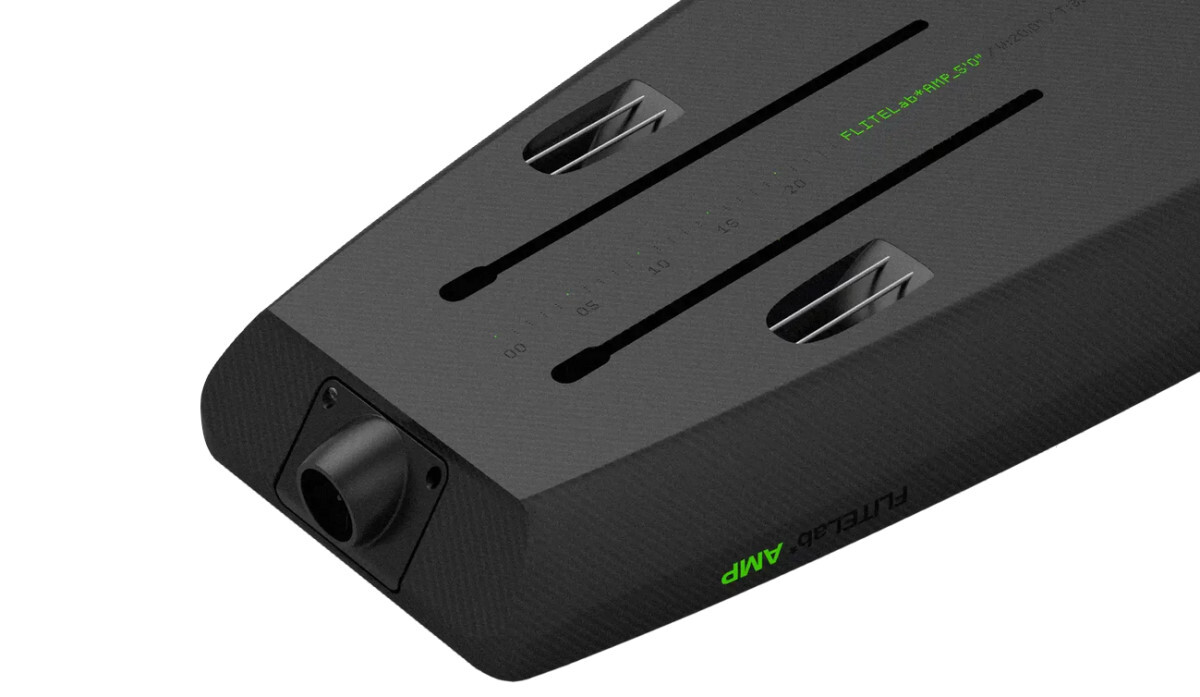
Cole: So you're saying the water comes in through the intake, then goes to the impeller?
Chris: Yep. It shoots out. That's your power. So that's how a jet works. There's both a stator and impeller in here that generates all the power. We worked on this for years to get a small impeller. We had several challenges. One, we wanted the board to be as stiff and strong as possible because we're putting this cavity structure in. Now, you'll notice that the cavity is exactly the same width as the tracks. The tracks are stuck to the cavity and it ends up being an I-beam to the deck. So this thing is stiff and bulletproof. We also had a limit on how thick we could make the board. We looked at all the boards on the market, and the 4'6" was sitting around 3 in. So that's what we've got to play with. Trying to jam everything into a 3" thick board and 90 mil wide tracks was quite the challenge.

Now, if we were to go with a traditional jet which has one intake, that intake would have been before the mast so it's not disrupting flow, plus the mast needs to move backwards and forwards. Before that intake would be the motor, then the batteries... and then our weight's completely out of whack. So going with twin intakes actually allows us to put all that weight underneath the mast and the front foil. We moved stuff around, 3 mil here, 2 mil there, just to get that balance perfectly over that front foil. That was a really important part of the project, and quite a challenging one. I was literally putting weights on the board and gaffer taping them and moving them backwards and forwards just so we could feel what it actually did to our foiling.
Cole: Put the jet over the top here just so people can see where everything goes. If we had an X-ray here, you'd see a couple batteries in the front, and then you'd see the computer that makes this whole thing run in here. So, when Chris says they were trying to get it underneath your feet, you can see that if your feet were on here, it's perfect. It's balanced. When I rode it while pumping, the board feels maybe a touch heavier, but it's not like your weight's wrong. On an eFoil, when you try to pump, it's like there's all this weight everywhere. This rides exactly right.

Chris: And when you pull that weight out and put the foam blank in, you don't move your mast. It's really good like that. The other thing that we worked on is our batteries. We don't like silicone grease. Silicone grease and sand don't mix. We use a triple-lip seal to keep the batteries dry. The batteries are waterproof, so if you were to get a little bit of water in here, it's not game over. You dry it out and check why you're getting water in. But this thing seals so well that we've never had water in here.
We also include a spare seal. If you happen to damage this seal, you're not going, "Best conditions ever and I've got a bloody seal that's damaged!" Grab your spare, order another spare next week, and you're good to go. We don't want people stuck out of the water. That's really important to us. Reliability, safety, and all that sort of stuff. We know that you're all frothers, and we know that the day this fails is going to be the best conditions ever. So that's really important.
Cole: One thing to add about this seal here is that it's a great example of all the detail that goes into this whole thing. This isn't a cheap product. It feels real. The clips lock in. They come out nice. Chris, you've thought about literally everything.
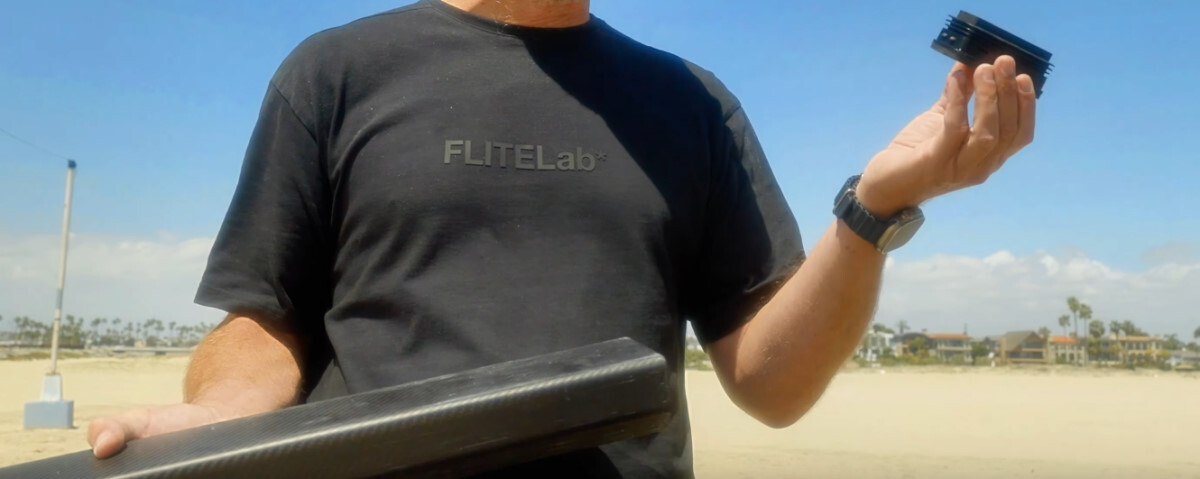
Chris: That's like a month's worth of design there, believe it or not. We've got a team of engineers at Flite. So, FLITELab and Flite share the engineers. We've got engineers for electronics, motor design, everything. It's awesome being part of Flite for that reason. They do all the Fliteboard work as well. You've got guys who design that sort of stuff, and then us FLITELab crew with the team riders are the crazy guys that come up with all this stuff, and the engineers are wondering what Chris is going to come up with next week. We really do push them, but they love it.
Cole: I see you grabbing the batteries. These are one of the coolest things about this.
Chris: These batteries have probably been the thing that's delayed our project the most. But it's been worth it. We're super conscious about batteries. We understand that lithium can be volatile. These batteries click apart, and each battery is a ridiculously powerful battery. This is a 58 volt, but it's light. That's 2.2 lb there. It's in a hard case, so it's fully waterproof and it's got a full working BMS in it.
Cole: And what is a BMS?
Chris: Yes, good question. BMS is a Battery Management System. There are several levels of a battery management system. You can have a battery management system to balance your cells. That's really important, right? If those cells get out of whack and you're pulling heaps of power out of them and you drain one down too low, you could end up with a problem. If you're charging it up and those cells are out of whack and one cell gets charged too much, once again, you end up with a problem. The BMS makes sure that those cells stay balanced as often as possible.
It runs 24/7. In fact, it's running right now even though the battery's not on. When the battery is getting charged, if there's a problem, it'll shut down the charger. When it's getting drained, when you're running full a 3kW through the system boosting, if it detects a problem, it'll shut down the battery. It will not let the battery over-discharge. On top of that, it's got temperature sensors in there. Any problem with the temp, and it'll shut down the battery. It's also got a humidity sensor and it will say, "Hey, this battery's got a leak. Go see your service center and don't use this battery." It'll tell you that.
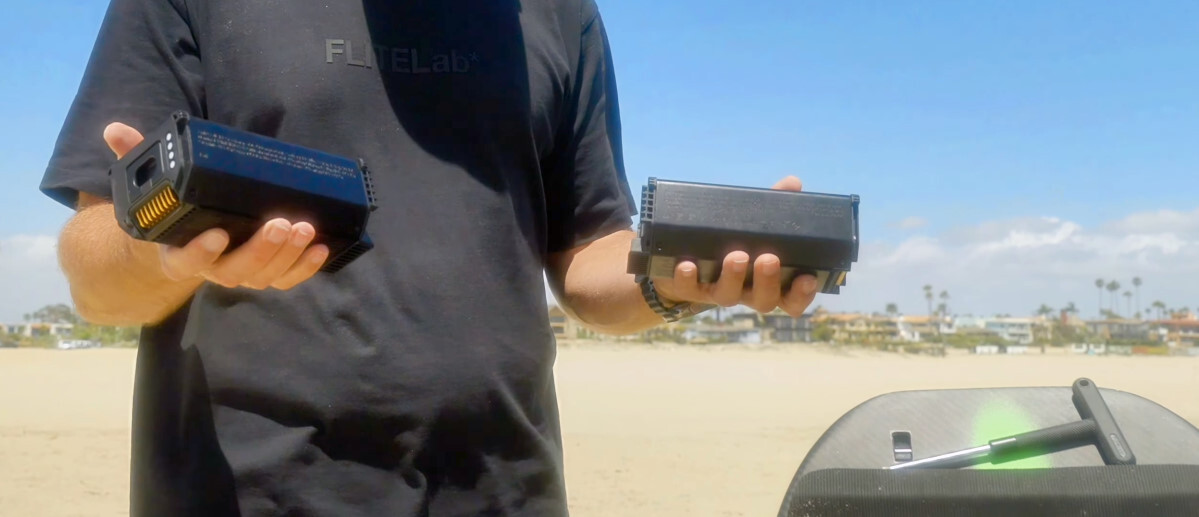
Cole: So, when you say the humidity, if water got into the jet chamber, would the humidity sensor go off, or only if water's inside the battery itself?
Chris: Only if it gets in the battery chamber. The other super important thing about these BMS's is that you can't just go and connect two batteries together if the state of charge on them is different. Say one was 50% charged and the other was 100% charged, then the full one would try to dump as much current as it could into the half-empty one. The BMS would stop it from doing that because it's a really dangerous way to connect batteries. It looks at both batteries and either goes, "Yep, these are both the same state of charge. I'm going to connect them together." Or if it's not, say one is partially charged because you were in a rush and you only charged one 50% and the other one was 100%, then it would use only the full battery until it gets down to closer to 50%. Then, when it does, it'll connect both. So it will pull more power out of one to even them up as you ride.
Cole: How does your riding experience change? Am I going to get the same boost?
Chris: It depends on how far off they are. If they are out of sync far enough that you're running off one battery, you're definitely going to lose power.
Cole: Is it a straight 50%?
Chris: It is pretty much a straight 50%. To run the jet at the power that we do with that size impeller, we're pulling a lot of power out of that motor. Now, we're not pulling it out for very long, so we're not chewing through the battery. The paddle assist is not a problem. You can paddle assist all day long off one battery. If you've got it turned up to full boost, then you are going to have your power limited.
Now, if you're a super light 140 pound guy who rips on the prone and wants to keep the weight down, we've actually got a blank battery that you clip in, and you only throw in one battery. It doesn't work for me because I'm not a light guy, and most people that ride with two batteries can't really notice the difference because it's balanced so well. You'd almost have to have two boards out there and ride them back-to-back to tell the difference. Besides, most people, once they ride with two batteries, get addicted to that full boost.
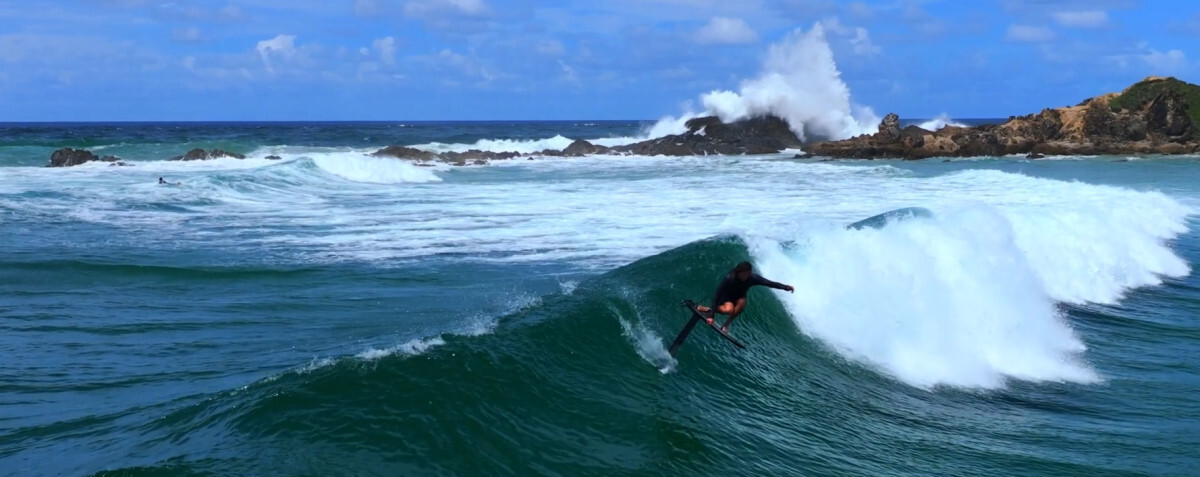
Cole: Yeah, I know that the full boost is crazy. Sometimes you can even chase down a wave. There's a lot of power coming out of this. When we look at all the different eFoils out there, what about the safety of this battery compared to those? What have you guys done?
Chris: Well, a lot. We hold ourselves to the highest regulations. We drop these batteries, we submerge them, we go through all these different process. We deliberately short them out and try to destroy them. These batteries will be tested and have more R&D and tech that has gone into them. And inside, between all the cells, we run this special material called phase change material. If, for whatever reason, one of the cells started to have a bit of a thermal runaway, this phase change material takes the thermal mass from everything else inside the battery and cools down that cell. It's this crazy material that actually goes cold when you heat it up. It's freaky. They've showed me how it works in the lab and they put heat on it and they go, "Touch this, Chris." I go, "Wow, that's cold." I don't get it, but it works.
Cole: And you tested it third party, too?
Chris: Yeah, third party. We don't want to do it in house. They're not going to let anything pass if it's even remotely on the edge of not meeting certification. So, absolutely fully certified. You can fly with these batteries at 142 watts each.
Cole: Yeah, that was my next question.
Chris: You can fly with these batteries, but we always always recommend contacting your airline first. Some airlines have stricter rules than others. Some airlines actually like you to call ahead and they want to know about the battery and who it's made by, and you've got a a sheet telling them all the technical specifications of that. Other airlines are fine as long as it's between 100 and 160 W. Two per passenger is standard for most airlines, so if you're traveling by yourself, you can bring just the two batteries.
But once you use this thing, you'll understand the runtime. It's not like you're going, "I'm going to be buggered." It's hard to predict what sort of session you're going to have, but if I'm on a beach break and I'm boosting underneath waves (because the boost duck dive gets very addictive because it's pretty solid), I'm using paddle assist constantly, and I'm getting lots of waves and not resting, I still get an hour and a half session. And then I've had sessions as long as 3 and a half hours where I'm using a little bit less paddle assist. I'm probably waiting a little bit more out the back, but I've still had a ton of waves or I'm doing a walk-around at a point. Depending on how long you take to get up to your feet, you'll get 30-40 plus boosts out of this. That's a lot of waves to catch. Now, if you fall off 30, 40 times, then you're probably going to burn through it quicker, but a lot of people get surprised by the runtime. It's a good amount of time. Very rarely do I run out of battery. I'm usually coming in because I'm tired, but I've still got 30% left.
Cole: Yeah, when I was riding this thing, every time I was coming off and looking at the battery, I'm like, "Okay, it changed just a little bit." I kept riding and still had all this charge left. So that's pretty cool. We can put the jet back inside the board, and then let's talk about the Launch Pad.
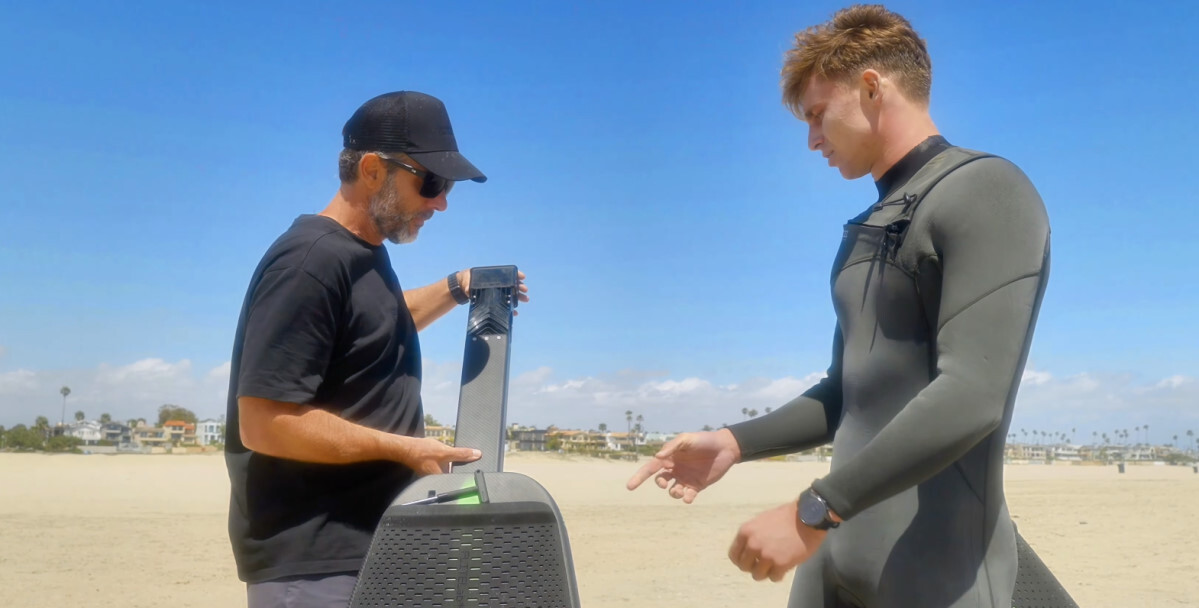
Chris: It's probably gone to sleep because we were unconnected, but it will power back up and connect to the Launch Pad. I'll just slide the jet back in gently. It's got a couple of little grips on the jet. The little orange mark on the locking screw reminds you that it's not locked, but I think when people drop it in, they're naturally going to screw it in straight away unless they take a phone call and forget about it.
That screw will lock it into the board, but it does something else as well. Say you've got the board upside down on the shoreline and a lot of sand blows or washes into the vents. We wanted to make sure that you can't get the cartridge jammed in here. When you screw this back out, it pulls the cartridge out and breaks that sand seal thanks to having the longer screw. You'd really have to pack a lot of sand in there to get it jammed enough to need to break it loose with the screw, though.
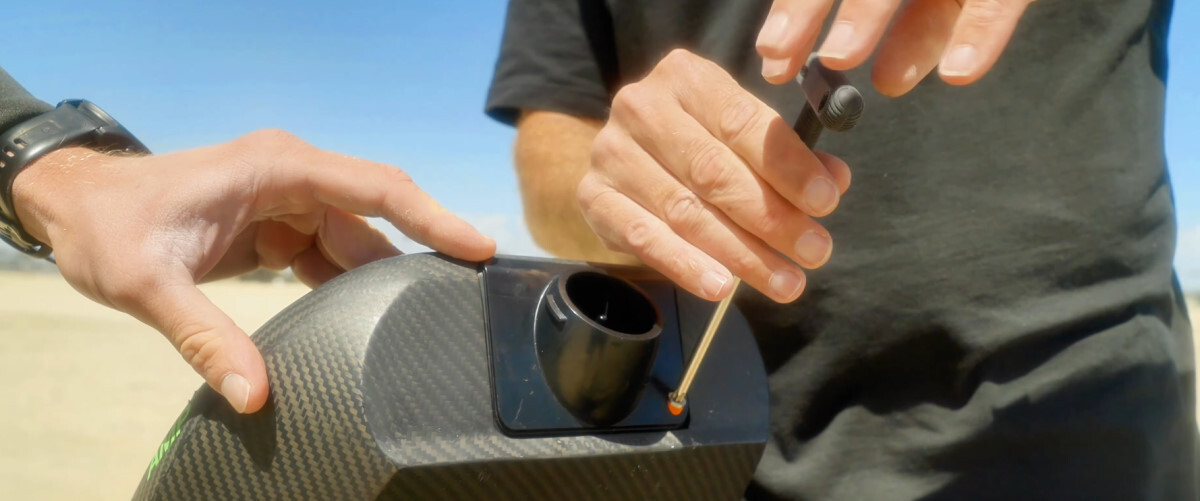
Cole: That's just one more compliment to you and how much thought you put into this. So what happens when you run over seaweed?
Chris: It's just like a blender and it goes straight out. I haven't been able to clog it yet. There might be something thick enough out there that we haven't found, but we've got grates on there to stop things like leashes from going up. You can't really poke a leash up there.
Cole: One thing that guys might be worried about is the jet when you're paddling. If you think about a jet ski and how powerful that is, if you ever been standing behind a jet ski, you can feel the blast from quite a ways away. When I was paddling the AMP, my feet were in the water, but the jet isn't so powerful that it's going to hurt your feet or anything like that. So, no worries if your feet are close to the jet. So let's talk about the Launch Pad. It's like an iPhone, but stuck in the middle of your board.
Chris: The Launch Pad basically is the brains of this board. It has a huge amount of tech in it, even tech that we're using in the future that we've got on the road map for designing. It syncs with your phone. It records all your waves. It records distance, time, and how many waves. In the future, we're going to see things like how many turns did you do on a wave? How many G's did you pull in a turn? Or if you hit on a leaderboard. We also know exactly what the board's doing from this Launch Pad. The board knows if it's nose up, nose down, down to half a degree, left, right, all this stuff. So, if you fall when you're boosting, it knows you've fallen and stops the jet. It doesn't keep going and you get dragged by the leg rope.
Cole: Is this connected to the jet by wires?

Chris: No, it just comes out, but we make the fit very stiff. We've been out in 10 foot waves with this thing. We don't want to lose it, so it is a little stiff to click out, but that's a deliberate design. It will actually drop onto your standard wireless charger, and then it's very quick to put back in the board. You just drop it in and twist it until it clicks.
You can swap it between boards, too. The whole point of this ecosystem was to be able to swap the jet cartridge and Launch Pad between boards. I have the 4'2" and the 5'0" in my car all the time, and that covers me for everything. I love the 4'2" when it's clean and big or just clean since it gets into anything. The 4'6" is a little bit more forgiving in the chop. And then the 5' just goes in anything, especially for the wing and downwinding.
The Launch Pad will do a lot of things. When you first turn it on, it will work on getting GPS reception. You'll also see both the batteries. Here, they're both fully charged at the moment and showing green. If one was undercharged, then one would be orange and tell you that one's 50% and the other one's 100%. Once that 100% one comes down and it's worked out that it can pull power from both, they'll both turn green and they'll drain down together.
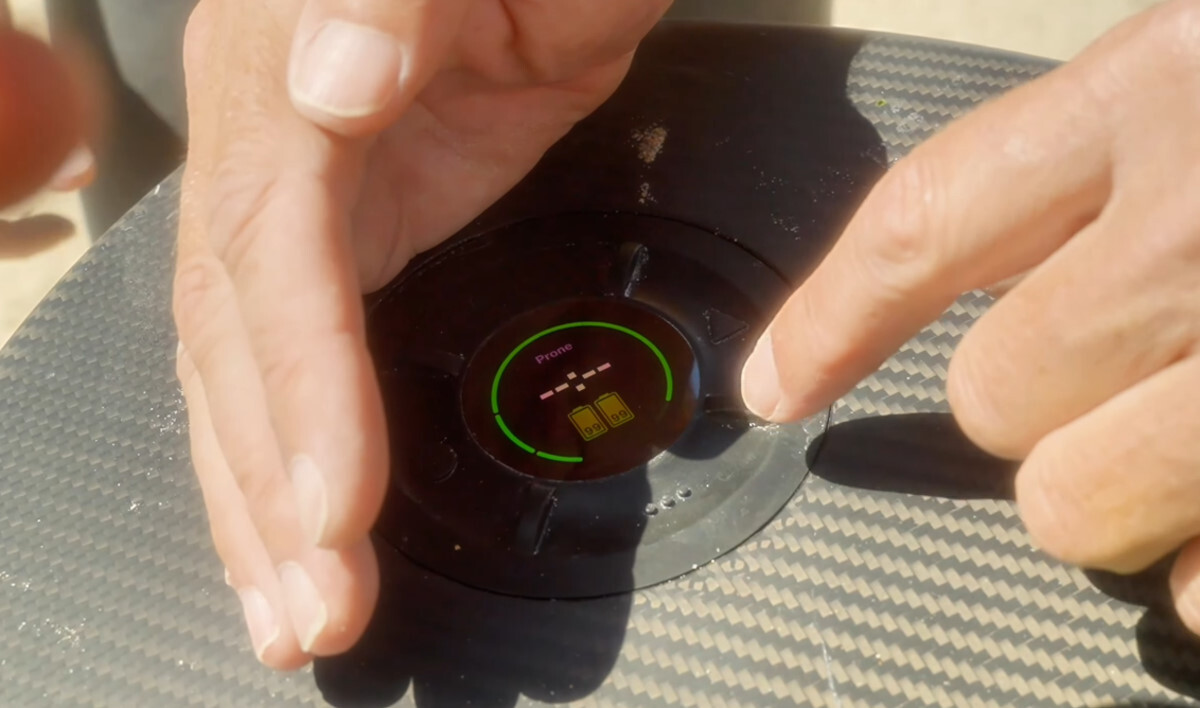
The circle button to the left is your paddle assist. If you press that, it gives you 60 seconds of assist. If I press it now, it turns off because it's detected that the jet's out of the water. If you're in a position where you don't need full boost, you can hit paddle assist and go catch the wave. Once you get up, it turns off.
The triangle button to the right is the boost. It has an acceleration curve, depending on what you've set, and then you boost under the wave. I have it set longer than what I need because once I'm up, it switches off. For duck diving, you can use the paddle assist to help you pull through, but if you're in really heavy, massive conditions, the boost is so addictive. You'll do the deepest duck dives you've ever done. It's absolutely mad. You're diving under this thing and charging out the back. It's got presets. Once you've actually used the AMP for a little bit, you'll dial in your presets to what you want. You can change it all on the Launch Pad. You don't have to use a phone app. And then those presets are automatically saved. You can reset them to the defaults, but the defaults might not be the best for you where you're at in the world. If it's too much thrust, you can turn it down.
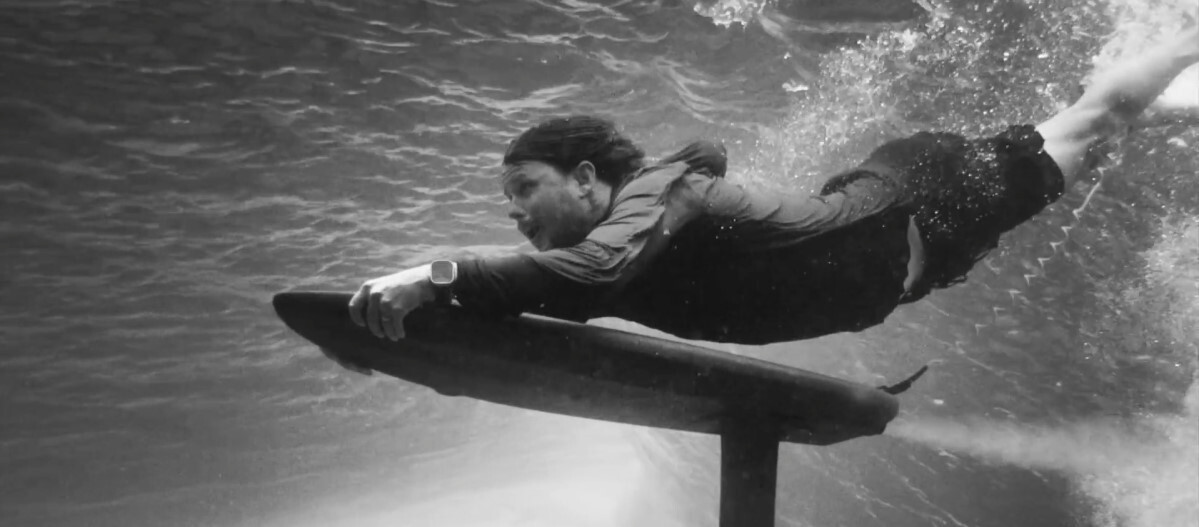
Cole: About some of the things that you can change... With the paddle assist, can we change the run time on how long the paddle assist runs?
Chris: The paddle assist run time is set in. That's one less thing to think about. It's 60 seconds, but if you need more, you just press it again. And if you want it less you can stop it. Depending on how long you boost for, similar power taken out of the battery for one paddle assist and one boost. So if you've got 40 - 50 boosts, you've got 20 paddle assists, which is 20 minutes of paddling, and you probably don't usually do that much, and you got 20 boosts. I probably use the boost more than I use the paddle assist.

Cole: So, what are the things you can change?
Chris: You can change the amount of power in the boost, from 1 to 10. 1 is pretty light, but might suit someone. We stuck it in there because we can. I sit anywhere between 6 and 10, depending on the conditions. Then we've got the boost time. That is how long it runs at the maximum thrust you set. We've got another parameter called acceleration when you're going from 0 to your maximum thrust, plus the boost time, and then you've also got a de-acceleration time as well. The de-acceleration does two things. One, it saves the drive chain and makes everything smooth. Two, when they're learning, some people find that thrust is just a little bit intense and they might get up, then dip the back of the board, and the board's trying to shoot out.
I actually suggest to turn your boost time down. Your acceleration might be sitting at 3 seconds. Paddle for a wave, get your hands on the deck, and listen for the motor. It's pretty quiet when it's in the water, but you can hear it. Wait for that to wind down, and that makes it easier to get up to your feet. Once you get used to the boost and getting to your feet, you're quicker. Then you just paddle one, two, up, and then the thing switches off.
I have my boost set for longer because I might need that longer paddle or that fatter wave, or something doubles up and I just want to go for a bit longer. So I usually have my boost set to 5 or 6 seconds. It goes all the way to 8, but we use that more for winging for a smoother, longer ramp-up. And if the wind's really light, it just takes longer to get up on foil. Adam got up on this 32 L. He had a 5m wing and it was not even 5 knots. If he were to pump it, there was no chance he's getting up. But with the boost, the board came up onto the surface and he was pumping and he got up and got going in nothing. You can run small gear, hit the boost button, and up you get once you get used to the timing, which most people dial in super quick.

Cole: That's what I couldn't get over. Although you can customize it for your conditions and what you're doing, Chris just was like, "Hey, here's the settings you're going to use." And I hopped on and went and rode and it was so easy. You hit the circle button and you feel like Superman paddling out into the lineup. I think the boost button was set at an 8 with a two or three second acceleration, and the first wave I saw I hit the boost and got right up onto it. And it's such a smooth transition. As soon as you get up out of the water, the computer goes, "Okay, we're out of the water." And then the motor shuts off. And it's quiet. When you're paddling, you barely hear it. So yeah, it's super easy to use. Okay, let's chat about the foil. The other magical part.
The FLUX Foil
Chris: Well, we talked a little bit about the way the tracks work. You can put whatever foil you want on the AMP. Hopefully, once you've ridden our foil, you'll decide you've got to have that thing. But they're standard tracks, so you can ride whatever brand you love riding, and there are some awesome brands out there now.
As far as size goes, if it's marginal 707 conditions, I might step up to the 808. If it's good 707 conditions, I just ride the 707. Remember that you are carrying a tiny bit of extra weight on the AMP vs. a standard board like the RAW. The interesting thing about the weight is, once you dial it in and you get used to it, it really doesn't take a lot of sessions to get into the rhythm of it. The swing weight almost increases your roll rate a little bit. I almost feel like a 707 on the RAW board has a roll rate similar to an 808 on the AMP, but then you've got that tiny bit of extra pump because you're on a slightly bigger foil. The mast is like the backbone of our system. It is a full carbon system all the way through. We worked on a crazy amount of prototypes and the thought process behind the entire mast. We knew that if you don't have a good mast, it doesn't matter how good a form you develop.

Cole: And you guys were so right on that. I could tell from riding this today that you don't lose hardly any energy. It's crazy stiff.
Chris: And the crazy thing is that this is a 13.5mm thick mast. It's one of the thinner masts on the market. It's full high modulus, and we put a ton of high modulus layers in here. We've removed the fuselage connection, so part of the fuse actually is the mast. Once we nailed the mast, all our foils came to life. Even some of our older prototype foils turned out to be better than we thought once we got the mast dialed in.
Cole: What about the material? Are you using the same materials a lot of other brands are using for high modulus, or is this different material?
Chris: This is the next step up. There are a couple of brands using ultra high modulus. Most brands are using either a standard or a high modulus. We looked at what everyone's done in the market and we liked some things and didn't like some things. The whole idea is to minimize your connections. The more connections you've got, the more chance of movement and wear. A lot of companies have gone to the monocoque front wings, which is great. Most of the fuse is attached to your front wing, and that minimizes connections.
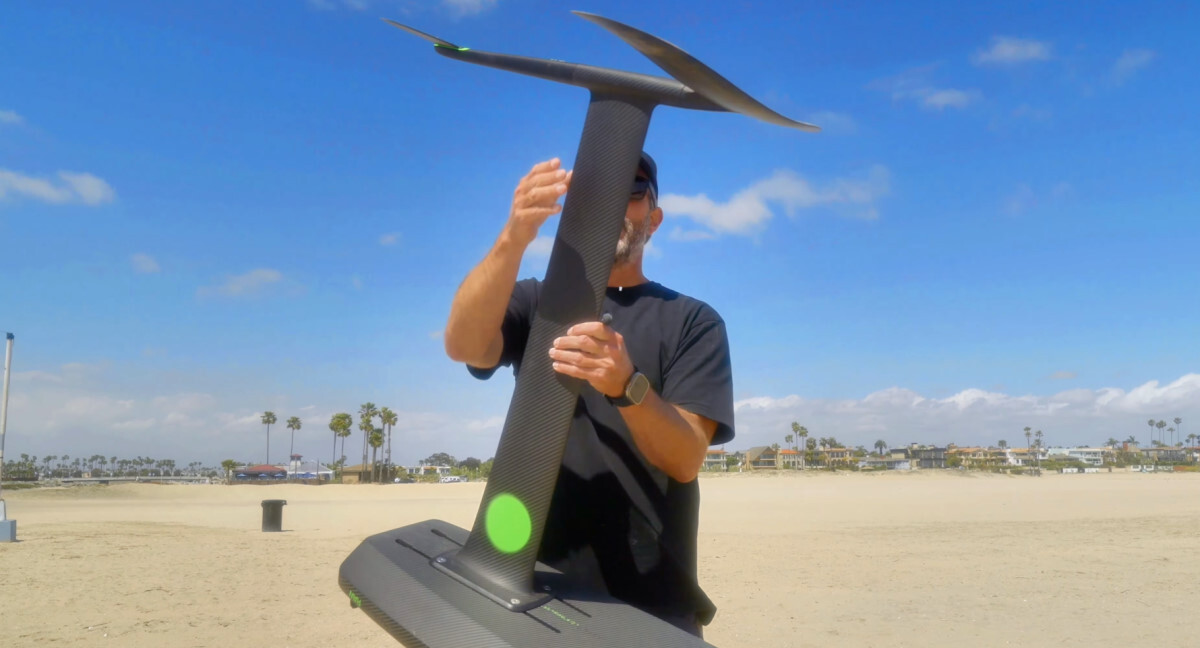
The thing that I haven't loved about those is swapping things out. You've got to pull the whole plane off and undo the tail because you want to swap front wing out, then you put it all back together. Now, you're not spending hours doing it, but we love to save time because we love to be out. Here, if I want to swap out a front wing, it's two bolts.
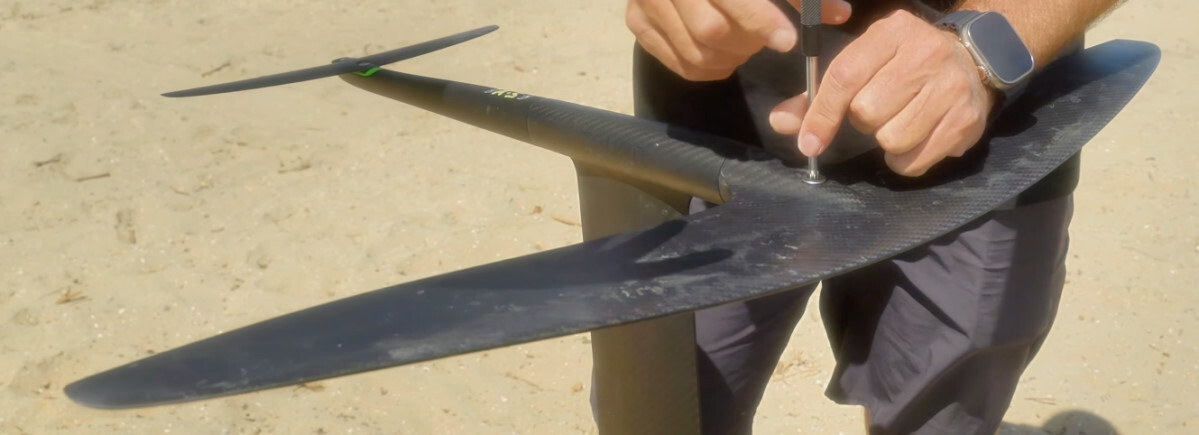
The other thing is traveling. When you start to get three or four wings into a bag, it's a lot of extra foils to try to pack in there. We've got this smaller front wing without all the interface, so you can travel with as many foils as you like and it packs down really small. We have what we call a conical interface. It's similar to some other brands, but in the execution of it, we're actually quite different.
Cole: Yeah. Pull this off and show people. This is special. This is different than any other brand that I've seen. And at first glance, it looks like some of the other brands out there.
Chris: You could have had this on for a month, but you just give the wingtip a little tap and it slides off that easy. The hydrodynamics theory behind all of this is that we didn't want to suck up our front wing with too much fuselage. We realized quite early that having less fuse in the wing helps a little bit, but we also wanted a super stiff connection. There's no point designing a foil if you don't have a super stiff connection. The only way around that was going with a titanium fitting.
Titanium is really awesome in the ocean. It doesn't corrode and it's one of the stiffest materials for its weight. We've got titanium both in the front and rear of the fuselage with an ultra high modulus mast, so that's the backbone of the system that makes everything work so well. The other challenege is that hitting tolerances in manufacturing is a really hard thing to stay on top of. We worked out quite early that if you have four smaller faces in that connection, there's less surface area to get wrong.

Cole: When you say tolerances, you mean like when you when you tap on your foil for some brands and it doesn't quite fit or it's loose, that kind of thing?
Chris: Right. And hitting that day after day, foil after foil, fitting after fitting is really hard to do. So we wanted to build something where it's the same feeling every single time. So this wing will slip on and it's still nice and loose. Then we rely on M8 bolts, but what we've done is we've done custom bolts. If you've lost your bolts, we're going to supply spares, or you can certainly go down to local hardware and get an M8 bolt. We wanted one tool, so all these bolts use a T30. We like the tension that you can get out of an M8, which then pulls directly down onto those four faces. It gives us that beautiful, stiff connection that we've got. We've been testing this thing for well over a year now with Adam Bennett, who does more turns and harder turns than anybody else. And it's just flawless. Just two bolts, and then you've got something stiff that's never going to stick on. No mallets, no nothing, and it's bulletproof.
Cole: So there are those four contact points here, and when you tighten those screws, basically that front wing tensions down on top of those to the point where it's not moving?
Chris: Yes, it's pressing down onto those four exact faces. That bottom part of the connection is actually not even touching. There are the two plates on either side. If you were to wear this down, because it's not the whole surface, it's still going to compress and it's still going to be tight. Inside the front wing, we've got a layer of aramid which is really hard to wear down, and you're never going to wear the titanium. That stuff is impossible to sand and file.
Aramid's also a very difficult thing to sand. If you've ever worked with aramid on a board and were trying to sand it, you know it's really hard stuff to sand. But because it goes on so loose, you're not wearing it in the first place. We've got old foils that we've run for ages now, and they're as good as new. Even if you do eventually wear it, you would never know. It's still going to pull down because of the way it's shaped, so it's still going to be as stiff as the first day you used it. So, no having to do maintenance. You just buy the thing and use it.
Cole: And is this the same for the fuselage back here?
Chris: The fuse is exactly the same shape for the carbon tail. You give it a tiny bit of a wobble and it comes right off. It's smaller version, but exactly the same. This end is designed to handle all the up and down leverage because that's what the tail does, whereas the front wing interface is more about the torsional stress and less about inflection.
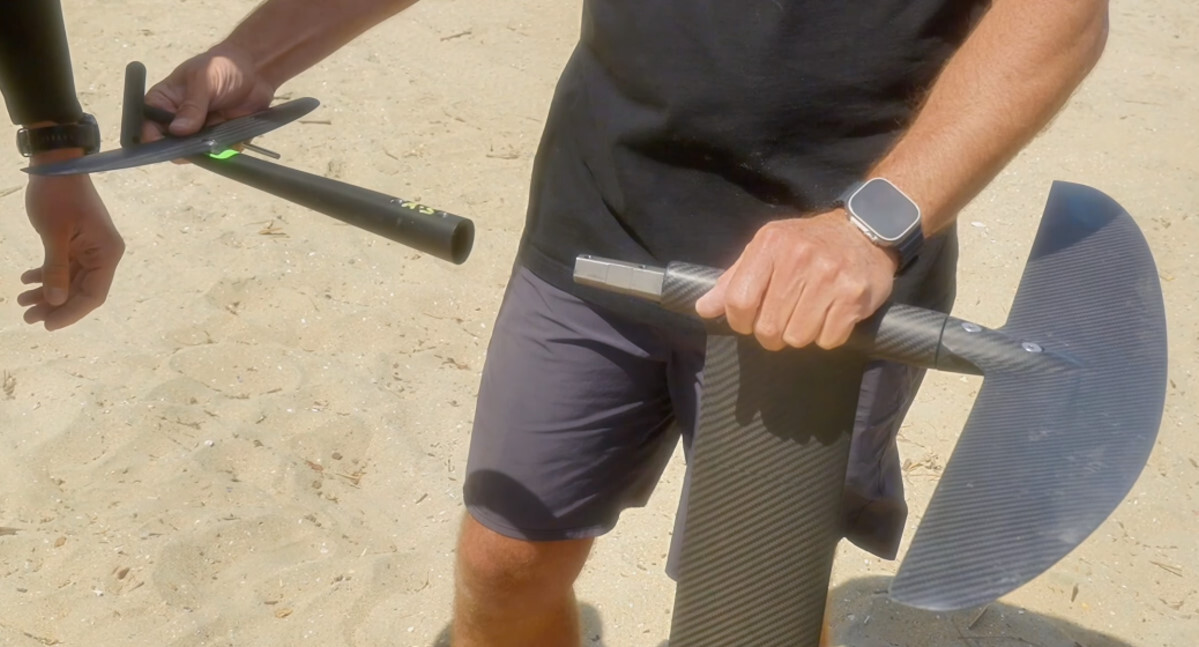
Cole: Can you talk a little about fuselage sizes and then about the stabilizers?
Chris: At launch we've got short, medium, and long fuses. This is a short. The one I'm holding is an alloy prototype, but the production ones will be identical in full carbon. And we've got an extra short just going into mold at the moment, but those probably won't make launch. It will be for those people that really want to throw it around a little bit tighter.
Cole: I was riding the short this morning, and it was so easy to whip it around.
Chris: It is. Fuse length is relative to the foil design and tail size that you're using. You might have other foil designs that run a lot shorter fuse just to get that turning. These are a mid-aspect foil and they're super rolly. You'll find that Adam and Eric mainly use the short, and sometimes on the bigger wing they might go down to the extra short. Sometimes they even use the medium if they're towing.
The long is even more pitch stable and great for beginners and wingers. These are incredibly pitch stable foils already, but we like to cater to everybody. I ride between a short and a medium myself, but then we ride pretty small tails. This tail is a 125, so it's definitely getting down to the smaller end of things. The camber and the foil section we've got on this has got great low end and quite a lifty tail. At launch we've got a 125, a 140, and a 160. I switch up to the 140 for even more low end, and the 160 has that stability for beginners.
Cole: Today we had knee-high waves, and this 125 still pumped super well. Can you talk about shims, and then we'll go to the tail sizes.
Chris: With shims, we try to keep it simple. It's nice to go build a tail with no shimming whatsoever, but everyone rides a little bit differently, and we understand that. We've really tuned the system, and the tails are built to be run with the neutral shim, which is what our team riders use. There is an angle of attack built into this tail, and it's designed to run with the front wings and for its size. So when you're starting off, throw the neutral shim on and see how it rides for you. There have been very few people that haven't said that was just perfect.
But if you want a little bit more front foot pressure and you don't want to move your mast forward for whatever reason, we've got a +.5 and we've also got a +1. If you want a little bit less, we've got a -.5 and a -1. The shims come with the tails, so you can choose what you want.
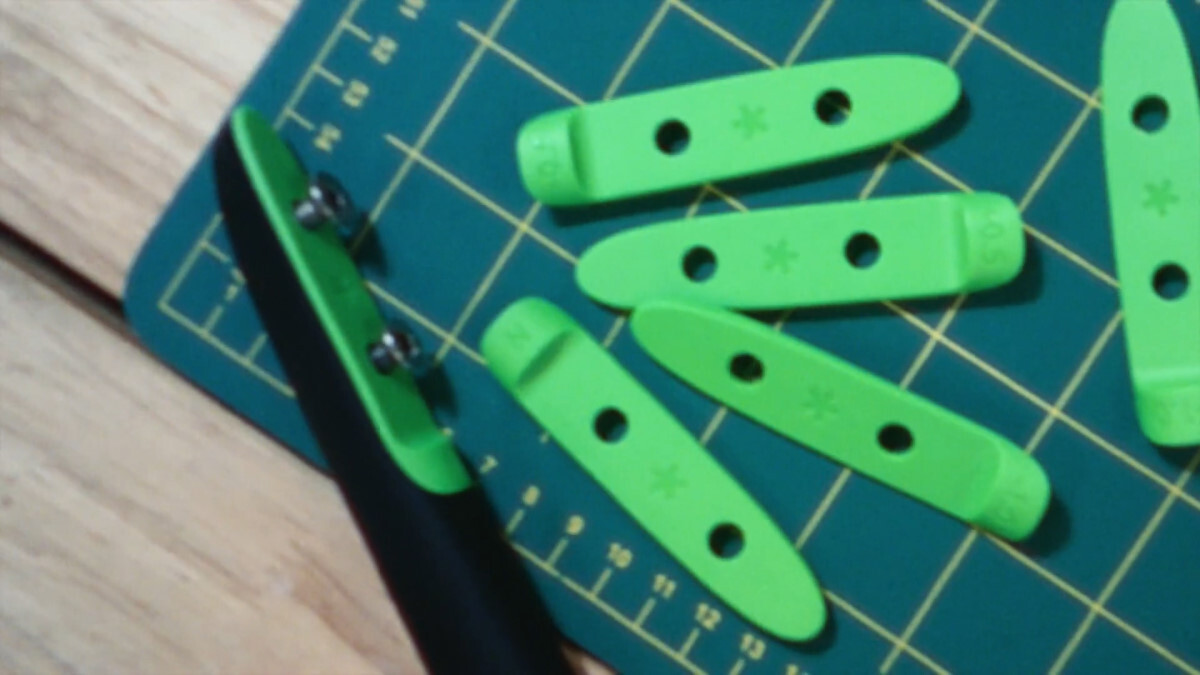
The other nice thing we've done with the shim is you can see what you've got on without having to undo the tail. I used to be someone that was forever tweaking my shim, but I'm rather neutral now. We run a flat interface here so you can pull this shim off or even use third party stabs that might fit on that. The shim's actually stuck down with two little locking tabs so you're not pulling a tail off and losing your shim. To remove it, you just pull it off from the rear, but it takes a little bit of force. Then you just click it back in. If I'm pulling the stab off because I'm packing, it just stays on. No having to find shims or lose shims. If people want to 3D print their own shims, the flat interface makes that easy. It uses standard 30mm spacing on the holes to be a little more compatible with other brands.

Cole: What are the front wing sizes for this first drop here?
Chris: First drop, we're going to have a 707, which is the surface area.
Cole: And it's a super fun wing.
Chris: It is a super fun wing. Pretty much my favorite. And an 808 and 1010.
Cole: Okay. So front wings are 707, 808 and 1010cm2. Mast sizes 82 and 87cm. And we're going to have the 125, 140 and 160cm2 tail wings. And again, that's the surface area. So how'd you make the front wing so magical?
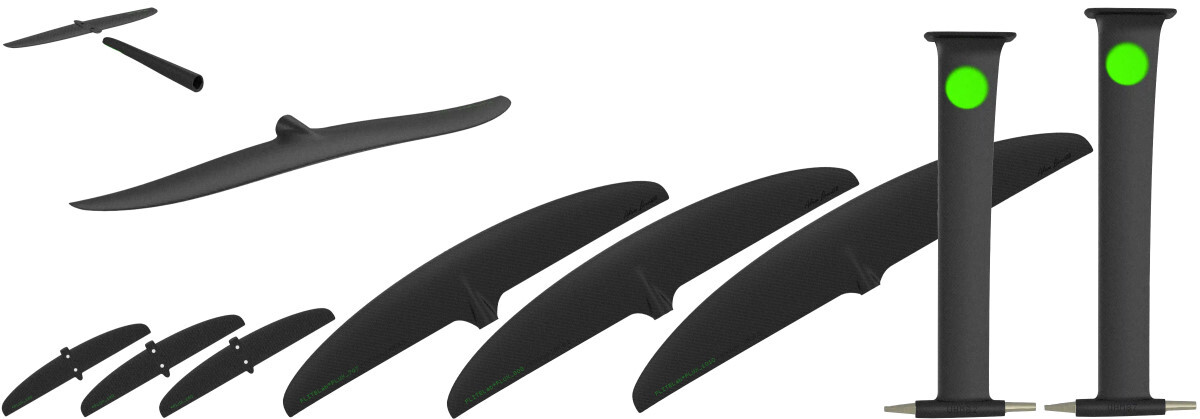
Chris: A lot of prototypes, a crazy amount of testing. We had this vision from the start. We've watched the market. I think it probably comes internally from what we like to ride. We love surfing waves because we have really good waves. The MAs are always a favorite with that roll rate and forgiveness in the pocket on the wave. We're a huge fan of MAs.
Cole: And when you say MA, you mean medium aspect?
Chris: Yep. So the problem with MAs, at least for someone like me, is I'm terrible at pumping. I'm not in the water enough because I'm too busy building this stuff. And I've been injured, so I'm just not great at pumping a foil. But I love an MA. I love it when I'm towing. But when you surf a break where everyone wants to pump back out and catch another wave or needs to pump out wider to that perfect peak, I've always had to run a bigger foil than what I like to surf just so I can pump out to that thing. It's either do that or go to a high aspect.
I feel like everyone's focused on high aspects, and they're great, but I've never loved the way they surf. Adam's the same and the team riders are the same. They want to push the limits. So everyone's trying to make an HA surf better. We're like, why don't we do the opposite? Why don't we try to make an MA pump better? Let's make a fun carving wing actually pump like an HA.
So, straight from the get-go in design, we gave it a truckload of low end. We know we're going to sacrifice the top end, but how much top end are we willing to sacrifice? That was the journey. So, we worked out tip breaching and got the roll rate really nice. We worked on the foil section for so long. And we got the low end. Not only did the low end allow you to pump for a lot longer, which we knew that's what it would do, but it did some other magical stuff. It's forgiving. You can muck up in a turn and get the wobbles, and suddenly you've lost all your speed, and quite often on an MA you drop out. You're done. Whereas on this thing, you can catch yourself and suddenly the thing's still foiling and you're going, "This is crazy."

The low end helps you get up on waves, even the real gravel days where you'd normally need a 1000cm2 foil because it's so small. Suddenly we're in gravel waves on a 700 because you paddle in and it just comes up because it's got this low end. Winging is crazy because you can go out in light winds without a big foil.
Once we got that low end, we had sacrificed our top end. So then we're like, "Okay, how do we get this top end back in?" But theory says no, the computer says no; even our foil designers said that you sacrifice. It's all a compromise, which we understand. But we just kept going at it.
And then we tried this foil section that we're now running on all our foils. We had this one thing where the computer wasn't quite lining up, and we tested everything back-to-back, and then this thing rode like absolute magic. It's got the top end, it's got the bottom end, and it's fast. I'm someone that could never pump an 800 around. Not a medium aspect. No way. I can get up at 900 to 1,000. Yet here I am pumping a 707 around. Even the guys on the 606s say, "It pumps almost as good as a 707." You felt it. You know what I'm talking about.
Cole: Yeah, in my session today, I've just never had a wing ride like this. I've ridden the medium aspects from four years ago. They were really fun and carvy, but they felt super draggy. You couldn't get up to speed. But this always found its way back under your feet. Going back out to the next wave, maybe it's not as great as a perfect downwind wing, but it still pumped phenomenal. You can make it to the next wave and it's super fun on the wave.

Chris: I think that's what blows people away. They get on the wave and they surf it, and it is a beautiful surf wing. Then they're expecting to pull off and find they're dead in the water, but they pump out over six waves and they're like, "Are you kidding me?" It blows everyone away. So we are super proud of this thing.
And we're still finessing everything. The 707 is locked off and in production. The 1010 and 808 are awesome, but we know we can make them 5 percent better. So, we're going for it. Every wing might just be a tiny bit more delayed, but we don't want this to be outdated in 6 - 12 months. We want this to be one of those winning foils that hits the mark and people use for years to come.
Cole: I know this is the first drop, but do you think you'll have a new version every year?
Chris: In the Flux range, which is our mid-aspect foil, we're hoping that we can't improve this for a long time. This is not something that's going to be outdated in 6 months. We are working on other foils that aren't a medium aspect, so we're watching the market very closely. Downwinding is blowing up, so the design concept for downwinding that we're working on has got a little bit of a twist to it and is a little bit different. I won't talk about it too much yet, but we know what we want to do and what we want to achieve with that.
And then we'll just keep working on different lines of wings. This wing covers so much already. This is an epic winging foil, my favorite winging foil. This is an epic surf foil. I downwind the 1010 already. And I love it because it's so surfy. Am I going to win a tour with it? (Actually, I wouldn't win a tour with anything.) But am I going to win any race with it? No. Do I have an absolute ball downwinding it? Absolutely. I'm not there to race in downwinding. I'm there to surf as much as I can and have fun.

It's got so much low end and glide, so it's really good for downwind. We don't want 1001 different foils. We love that it's simple. This covers so many conditions. We certainly will do a lot of sizes, like a 606 probably all the way to 1212, and maybe even bigger. But considering how the 1010 pumps like something way bigger, you might not need that. We want to keep our lineup really clean and simple, so we're hoping we can do two or maybe three ranges of foils that cover everything. Then you're not trying to explain to your customers what foil does what and all the slight nuances of each. Just one wing that covers more conditions. The 707's a good example. You can surf it in tiny swell to 6 foot. It's almost like you only need one wing. We're super stoked and I can't wait for everyone to get on it.
What Goes Into Designing All This?
Cole: I don't know if a lot of people know this, but what's been the time frame for building this stuff? I don't even think I've asked you this off camera, but if you don't mind?
Chris: No, I'm open to it. We're an honest brand and happy to discuss anything. The Jet was invented in 2019. So crazy long. It was even before I worked for Flite that I came up with the concept. I came up with with a few concepts, and the jet was what excited me the most at the start. It was going to be built as an ecosystem so you can use the mast version as well. That was a motor on the mast, but built into the mast. Then you'd just replace the jet cartridge with a battery-only cartridge. In 2019 I'd been foiling for four to six months. And I was just so frothy on the fact that I was getting away from the crowd, and I wanted to take this to the next step where I could go to a break that's just fat water and no one can even foil or surf it so I get it to myself.
So I came up with this concept, got super busy with 3D printers and building it all, not knowing if it was even doable, and by 2020 I had a working product. From that I built the concept out, started talking to Flite in '22, then joined Flite by '23. We've been working on it to be a commercial product that's super reliable, super safe, really well thought out, and doesn't feel like a Gen 1 product. We figured since we're already at this point and the foils have got a long journey anyway, we may as well keep working on the jet and put a lot of effort into it. V2 is not going to be next year. This thing is gold. It's going to be hard to improve it. We won't stop, but it's not going to be outdated in a year.

And the same with the whole ecosystem. If we do build a V2 jet in 2 or 3 years time, it's because it will take us that long to make it better. Then you'll be using the same boards, so all of that's really well thought out. We've been working on the foils for probably a good two-and-a-half years now. It's almost broken us.
Cole: There's been endless testing, from what I understand.
Chris: The amount of prototypes... yeah, we've gone crazy. We're very fortunate that we've had a company to back us, to be able to put that amount of money and R&D into something that hasn't yet launched and sold. We're in a market where there's a lot of good a lot of good stuff out there, so if we can't be as good, if not better, we're not launching.
We made some pretty good foils, even up to a year ago, but we asked ourselves if these were the best of the best. No? Then let's keep going. And Adam's great. Adam only wants to ride the best, and the same with Eric and all our team riders. It's definitely been a long journey and there have been frustrations along the way, as all worthwhile journeys are. QC worked hard getting this thing to work, and we pushed the engineers. So I think there are going to be a lot of happy engineers and people once we launch. We're finally at the end now, which is great. It's all rolling off the production line. So we're super excited.
Cole: Thanks for sharing all that. So everyone knows, the launch date is late July, 2025. Thank you so much, Chris, for running us through everything. This has incredible being in California. This was a pretty last minute deal, and I'm glad it worked out.
If you guys have any questions, feel free to reach out to MACkite. Flite is changing the game in foiling. No one's doing a jet in the market yet, but even the foil has been the most fun surf foil I've ridden in the last couple years. So thank you Chris.
Chris: Good to hear. I reckon you should get back out there.
Cole: Yeah, I think so! All right. Well, till next time, guys. Thanks for listening.
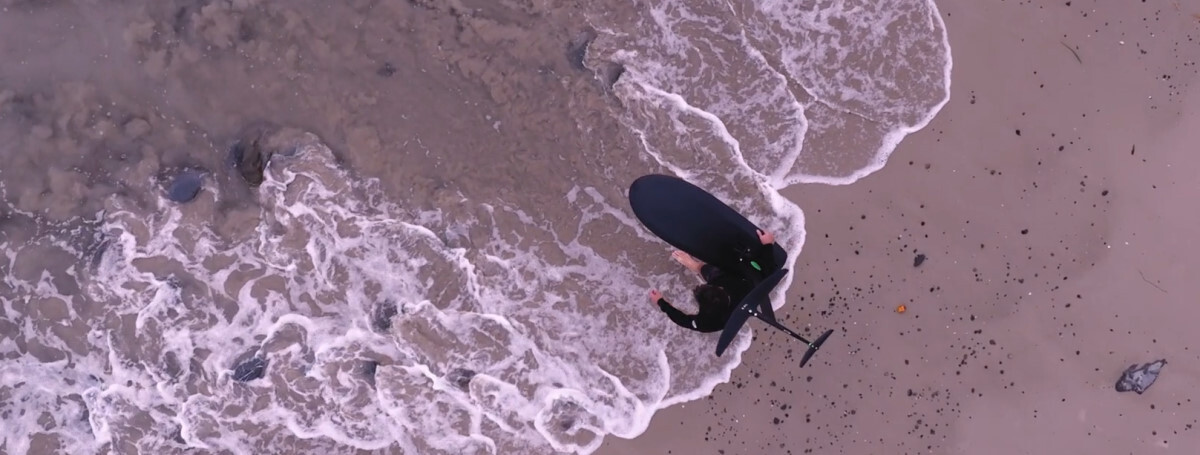
MACkite Subscription Links:
YouTube | Instagram | Spotify Oddcasts
Contact MACkite Below:
800.622.4655 | Kiteboarder@MACkite.com | LIVE Chat Messenger

Recent Posts
-
Foil Drive V3 Remote Explained | Features, Modes and Menus
Foil Drive’s V3 Controller is a true from-scratch redesign that aims to make riding more straightf …6th Jan 2026 -
Appletree Zapple S Breakdown | Short, Fast, Foil Drive Focused!
Appletree Surfboards has built a reputation for pushing foil board design forward, and the Zapple …2nd Jan 2026 -
King of the Air 2025: Inside Slingshot’s Wild Ride
A story of nerves, resilience, progression, and the mindset required to perform on kiteboarding’s bi …30th Dec 2025

